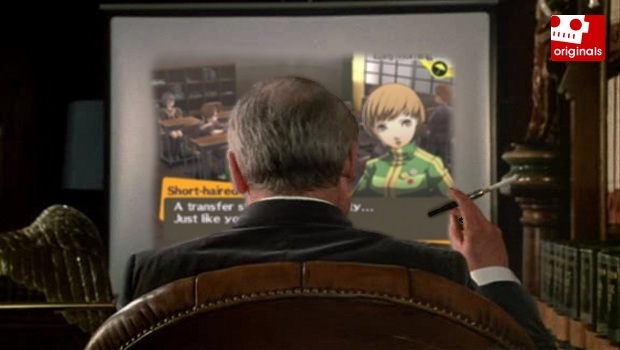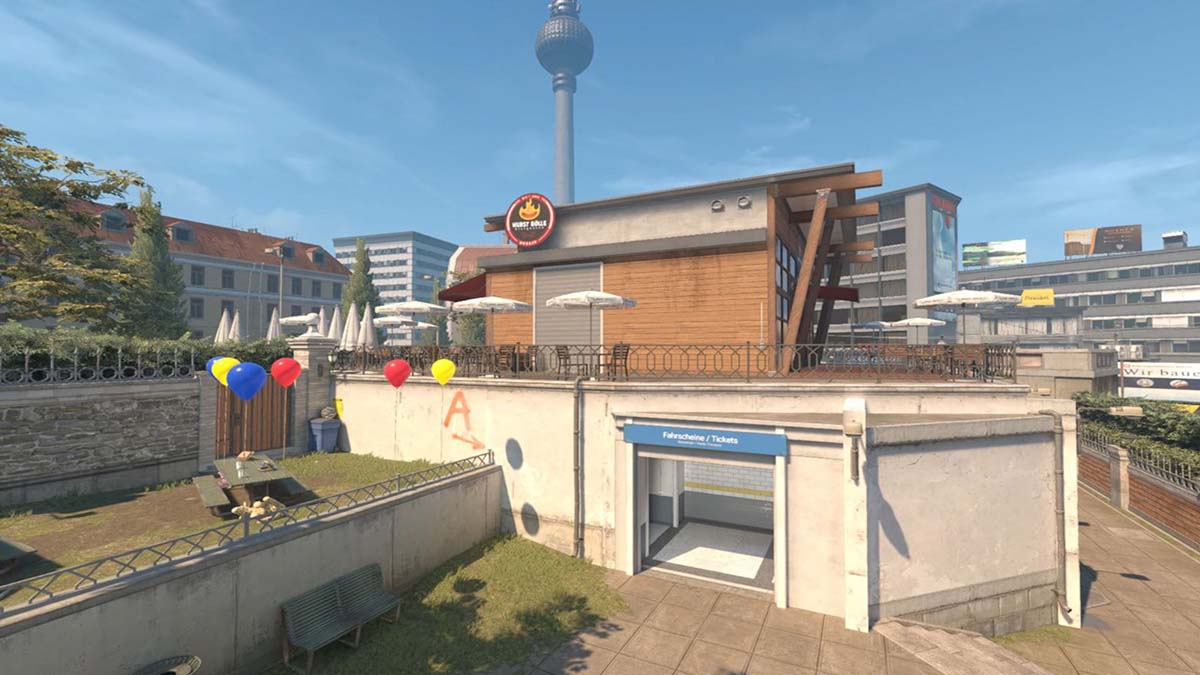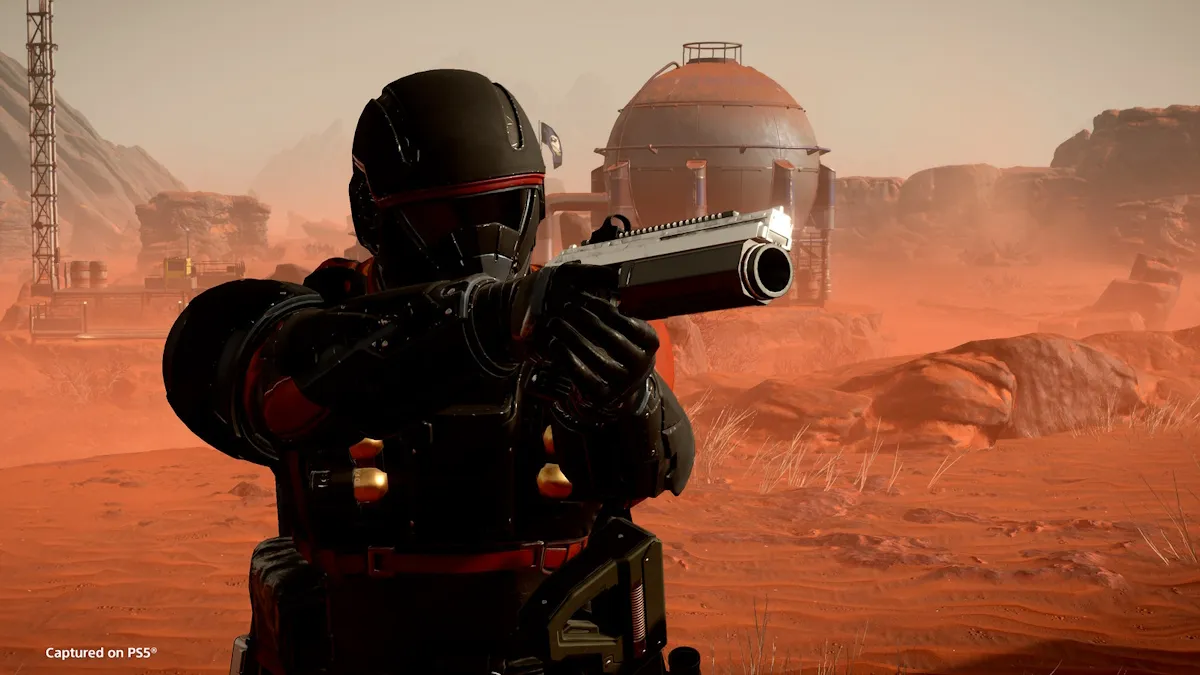[Editor’s note: Community member Byronic Man (a.k.a. Stephen Beirne) presents a fascinating, intelligent look at videogames through classic RPG Persona 4. Enjoy! -Chad]
Much can be gained from the analysis of videogames. Whether you’re a reviewer, a gamer, or a maker of games, identifying and analyzing what makes games good or bad can help you to better pursue games with the former qualities while avoiding those with the latter.
Perhaps most importantly, analyzing games can be quite interesting and fun. As with every other, this medium has the potential to express meaning. Alongside down-to-earth issues of humor and relationships, hoity-toity questions of philosophy are also identifiable within the course of countless videogames, ranging from the nature of morality to social purpose and ontology.
A game’s plot is not the sole vehicle of expression — well designed gameplay mechanics can (and often do) offer the player meaningful experiences. When a variety of different game elements successfully come together to convey meaning to the player, it can be tremendously enriching.
One particular game that embodies this conflux of elements is Persona 4. This critically acclaimed RPG features a wonderful mesh of gameplay mechanics and narrative content which can provide an astounding insight into game design. Although Persona 4 manages this in a way that is especially pleasing to break down and examine, the principles it follows are shared across all videogames. By using Persona 4 as a major example, we can easily uproot the manner in which game elements conspire to impart meaning to the player and the ways we perceive the games we play.

In 2006, Ian Bogost published a book titled Unit Operations, wherein he attempted to devise a method of understanding videogames that could also be implemented in any other analysis of any other media. A videogame, he wrote, is ultimately the product of an array of individual units of meaning that cooperate to form a complex system. The units in question are intentionally vaguely defined: they could be anything, varying from the visualization of an enemy on-screen, to an optional act in a moral dichotomy, to the function of the X button.
More important than the unit as an isolated metric of meaning is the network they create through their combination. This network is what the player interacts with, when all the individual units kick into action and form a world with which we can inhabit by means of an interface — an interface which is itself a network of collaborating meanings (a control scheme, a HUD, knowledge of the rules of a game, etc.). When the operation of several units in a system corresponds to the way we are expected to understand what each of the units tells us, the network seems to flow smoothly.
Units are not restricted to being individual nodes; a system comprised of many operating units tends to interact with other systems in the network, in which case each interacting system is itself a unit in another system. Like cells and organs in an organism or a sequence of notes that produce melody, videogames are comprised of an infrastructure of interrelated parts and meanings.
Taking Persona 4 as a prime example, this game is largely divided up into dungeon sections and school day routine sections. The latter sections present the player with a variety of activities that can upgrade the player-character’s prowess in numerous Social Links, grant him a monetary reward, or increase his statistics thereby unlocking further activities.
The player can also spend this section trading money for weapons and items, discovering sub-missions (usually fetch quests with item rewards), or otherwise exploring the city. Many of these activities absorb the rest of your character’s daytime while some take up nothing at all, and since the plot follows a calendar deadline these sections are largely dictated by the player’s timekeeping decisions.
One activity that eats up your day is a dungeon section which must be completed before the deadline passes. Here, all the items and money you have gathered and Social Links you have ranked up come into play: items and weapons work to your advantage as you fight monsters on your way to the heart of the dungeon, money can be used to restore your health and SP (ability points), while high Social Links grant you the power to combine and birth Persona (the creatures you use to fight monsters) of much higher levels than you can otherwise obtain.
The gameplay mechanics work in such a way that daytime sections enable the player to take on the dungeons, while progress in the dungeon sections likewise determines the player’s timekeeping habits. Each section plays off the other, while each action determines and is determined by other actions.

Bogost called his methodology unit operations to emphasize the importance of both the individual components that make up the game and the concerted whirling of the units that ultimately is the game. In order to understand the latter, you must understand the nature of the composite units. Although so far this only really accounts for the various mechanisms of the game, Bogost makes no attempt in his model to undermine the role of the player.
Inevitably, the unit operations of a game depend on the agency or participation of the player in order to be recognized. Whether or not the network flows is up to the player to decide under his or her own prerogative. The tenet of subjectivity is one held by many videogame critics so that should come as no shock. What Bogost wanted to invigorate was not a new era of objective criticism but rather an understanding of the methods by which players experience games. In doing so, he hoped to bridge the gap between computation and the humanities, between videogames and literature and film and music.
As wonderfully abstract as the defined “units” are, they can take the form of much of anything and serve multiple purposes in one fell swoop. The old perception that narrative in videogames brings about a distinct divide of gameplay and cutscenes is now horribly outdated. Narrative is just another form of meaning that collaborating units can impart, often side by side with information that tends to be more practical for the purpose of the game.
In the upcoming Lollipop Chainsaw, boss characters spurt gigantic swear words that fly at the player-character Juliet, dealing damage if they connect. More overtly, in the Ace Attorney games narrative elements are inseparable from the flow of gameplay. A far more subtle unity of narrative and gameplay is the ladder scene in Metal Gear Solid 3: Snake Eater, which serves as a reprieve after an intense sniper battle with The End, breaking up the action and heralding the beginning of the final leg of the game. (A game’s music is also an operational unit — consider the cheesy Snake Eater theme song or the amazing melancholic powers of some of the Ace Attorney tunes.) There is no natural schism between units of narrative and units of gameplay — as often as not they are one and the same, so closely entwined they might be “form and function.”
Returning to Persona 4, each of the gameplay mechanics mentioned above work together to form a cohesive narrative framework. They operate in such a way that either they are tied into the progression of a narrative element or promote the game’s distinctive narrative theme, sometimes doing both simultaneously. Social Links — and thus your affinity for creature types — are increased by hanging out with various NPCs in the game world: deciding to spend the day with one such character will advance their relationship with the player-character through an in-game cutscene. The resultant process is that as you engage with the other characters and learn more about them, your Social Link in their category increases and your propensity to create Persona of that category strengthens. On top of that, these systems are so named to propagate the theme of social identity.
The player-character also has statistics indicating character traits (Courage, Understanding, etc.) that increase as you partake in relevant activities; with higher statistics you can avail of new activities (usually introducing an NPC pertaining to a new Social Link) and unlock more courageous or caring options during narrative sequences.
Furthermore, as said earlier the various sections follow a calendar timeline — certain activities are only available on certain days, and the dungeon sections must be completed before a certain date, whereupon the narrative either progresses or ends in a game over. Since the player is working against the clock in such a manner that his or her decisions spur on the deadline, each narrative decision he or she makes (to spend the evening in a dungeon, at work, or with one of the many sociable NPCs) is characterized by a feeling of narrative impulse and impending consequences. Persona 4 is a particularly wonderful example of the operations between gameplay and narrative.

The effect of a unit operational narrative/gameplay framework on the player’s gameplay decisions is a huge one to consider per videogame. It is one we already perceive but seldom formulate in our reflections. Among other things, this collaboration between narrative elements and gameplay elements is utilized to a great degree in world-building and player participation – that is, it characterizes the player’s ability to participate in the fictional world of the game.
Say, in Persona 4, you take a shine to one particular NPC and pump extra time into developing this character’s relationship with the player-character. As you develop your friendship with the character and level up that Social Link, your ability to create powerful Persona of that Arcana (Persona type related to that Social Link) increases. Meanwhile, for one reason or another, you may find another NPC to be uninteresting and so forsake developing that NPC’s Social Link.
Each Persona category has general abilities and propensities: one Social Link may relate to Persona attuned to elemental magic, while another Social Link relates to physically tough Persona. Focusing on one NPC over another will inhibit your reliance on the underdeveloped Arcana, so you might have to do with an overdeveloped physical-type Persona in an area where you would much rather have a debuffing Persona. It’s a trade-off you might opt for if you really disliked the relevant NPC, but the gameplay consequences are yours to bear.
In this particular example, narrative elements influence the player’s desire to engage with various gameplay elements, and as the gameplay elements are utilized and extrapolated to the player’s benefit the narrative elements likewise extrapolate and expand the fictional world. The opposite can just as easily be true, where engagement with the narrative is determined by the player’s gameplay preferences. Whether you feel pressured to hang out with a dull NPC so as to later give you an edge in a dungeon, or whether you decide to put up with a tactical disadvantage so long as you can avoid that NPC’s company, your participation with the game world changes depending on your personal preference, as does the meaningful content of that game world.

As elements of a game spin and collude with one another, various patterns begin to emerge. These might be patterns of gameplay mechanics or narrative techniques or controller configurations – the list is nigh endless. We already harbour tremendous knowledge of currently existing patterns which facilitates a prompt understanding of games that build on from them. For instance, Persona 4 is a JRPG with turn-based combat, while Grand Theft Auto III is a sandbox game.
This identification of patterns is inherent throughout our understanding of games as a medium and as individual products of entertainment and/or meaning. Fans of Persona 4 who have watched an episode or two of the anime based on the game are able to recognize which elements have been retained for the show (plot, music, the calendar screen and eyecatches, etc.), which have been dropped (gameplay elements, naturally) and what has been added or changed (a vocal protagonist, more appropriate pacing to suit the show’s structure, etc.). Our identification of configurations within the medium is never more prominent than when a piece is being adapted for another medium, as we solemnly understand that some unit operational instances (e.g. turn-based combat) cannot be transferred across. On that same note, we appreciate when an element that made the original piece great survives the adaptation. Anybody who has played a videogame based on a familiar movie can attest to this (consider The Thing, The Italian Job, Ghostbusters, etc.).
Ultimately, what unit operations describes is nothing new. We employ the model in our everyday understanding of any piece from any medium and we do so naturally. What we have to gain from unit operations – or from any other model that seeks to explain videogame analysis – is a discussion on the way we experience the games we play, the manners we perceive different elements and patterns, the roles a player adopts as a participant and as an audience member and how the two alternate, where subjectivity comes into the equation and when videogame analysis slides into introspective analysis, and so much more.
By talking about which configurations operated smoothly and which did not, and why we feel as much, videogame designers can churn out games that capitalize on this knowledge. There doesn’t need to be an assumed vast chasm between games as silly entertainment and games as an expressive medium – along with enjoyable gameplay mechanics we will continue to discover incisive narrative techniques and further unify the two. Then, maybe some point down the line, we will finally get our Airplane! of videogames.




